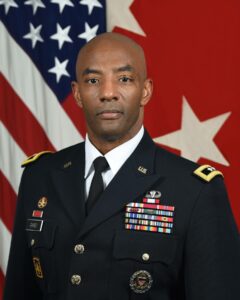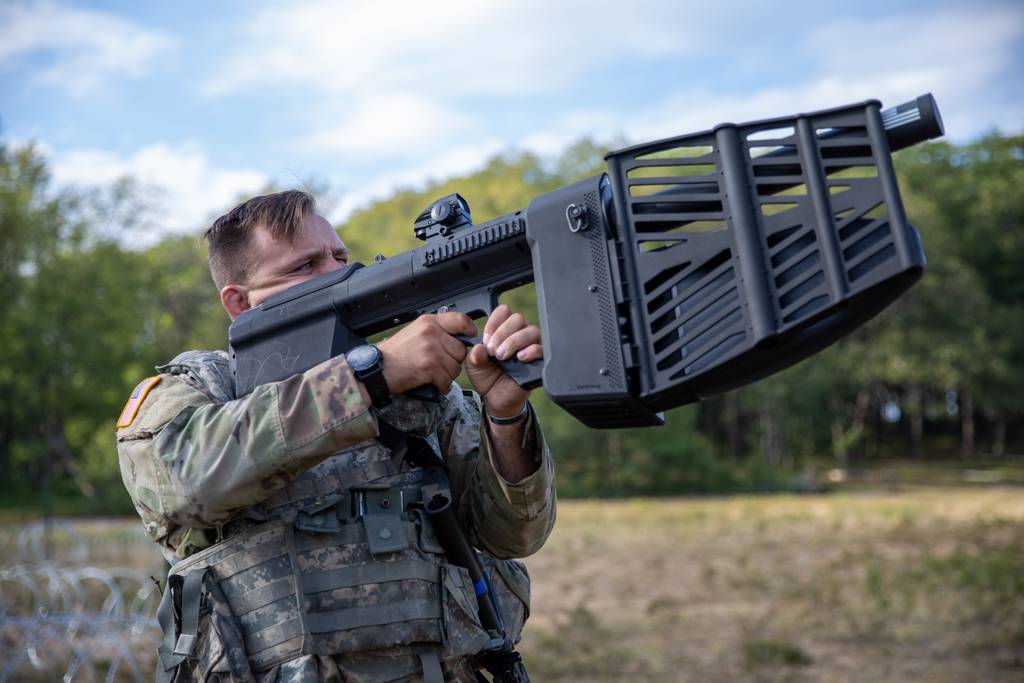El Ejército de los EE. UU. creó la Oficina Conjunta de Sistemas de Aeronaves No Tripuladas Pequeñas para hacer frente a la proliferación de drones. La responsabilidad surgió después de que el entonces secretario de Defensa, Mark Esper, designara en 2019 al Ejército como agente ejecutivo para las actividades contra los UAS. El Centro de Excelencia de Artillería del Ejército en Fort Sill, Oklahoma, se enfoca en las capacidades contra UAS.
WASHINGTON — Thanks to affordable material and the mitigated risk to humans, experts have pointed to drones as the future of conflict. Already, Russia and Ukraine have deployed drones on the battlefield, each seeking to increase its drone arsenal as their war approaches the eight-month mark.
For its part, the U.S. Army created the Joint Counter-Small Unmanned Aircraft Systems Office to address the proliferation of adversarial drones. The JCO came about after then-Defense Secretary Mark Esper in 2019 designated the Army as the executive agent for counter-UAS activities.
Maj. Gen. Sean Gainey serves as director of that office, and he spoke with C4ISRNET in September about what it takes to protect American interests against drones. This interview was edited for length and clarity.
The Army’s Fires Center of Excellence at Fort Sill, Oklahoma, focuses on counter-UAS capabilities. How is that effort going?
We’re going to transition what we’re doing at Yuma [Proving Ground in Arizona] into Fort Sill, and that process is happening right now. We’re starting to get the classrooms. They’re starting the program of instruction development. We’re working with the joint team across courses to make sure we’re maximizing all the [program of instruction] capability.

Will the center’s curriculum focus on different types of counter-UAS strategies, such as kinetic options versus electronic warfare options?
The curriculum will cover all of that. You’ll have an “operators’ course” that will really introduce operators to the spectrum of counter-UAS capabilities that are out there, really focus in on the systems the Army’s currently fielding at divisions and the other services are fielding at their sites or locations.
We’re really excited for our “planners’ course” because, right now, we really don’t have the planning or understanding of how to employ counter-UAS capability from a planner perspective, and that’s going to be a critical piece. That’s probably the course that’s going to be stood up first because, right now, as we’re putting capability out in our installation site, one of the biggest challenges is installation commanders having a planner that they can look at to do the employment of the capability and then lay out all the planning factors with it.
You recently talked about the need for more widespread knowledge across the force on counter-UAS systems. What is the JCO doing to facilitate that dissemination of training and knowledge across the entire force?
The first thing we did was put out a strategy. The strategy was really the first document that we put out that framed the problem for the entire enterprise. Then we put out a handbook based off what we’re doing forward in U.S. Central Command’s area of responsibility, capturing all the lessons learned. We not only provided that for the CENTCOM area of responsibility, but globally to all the combatant commands.
Right now, we’re on our fourth JKO [Joint Knowledge Online] module. If you go to JKO online, there are four modules there that span from operator-level familiarization all the way through policy implementations of employing counter-UAS capability. They’re actually really good modules, and we’re seeing a lot of interest out there.
Fuente: https://www.c4isrnet.com


